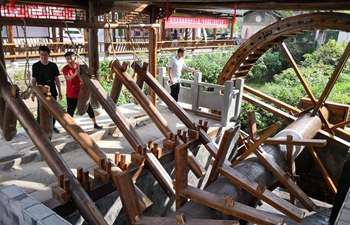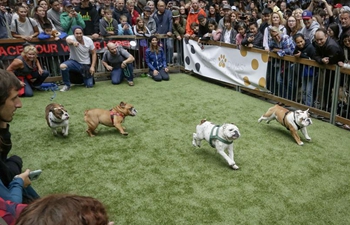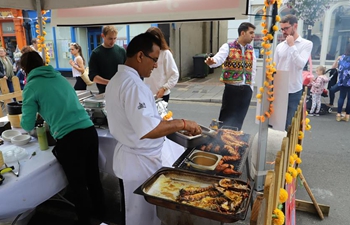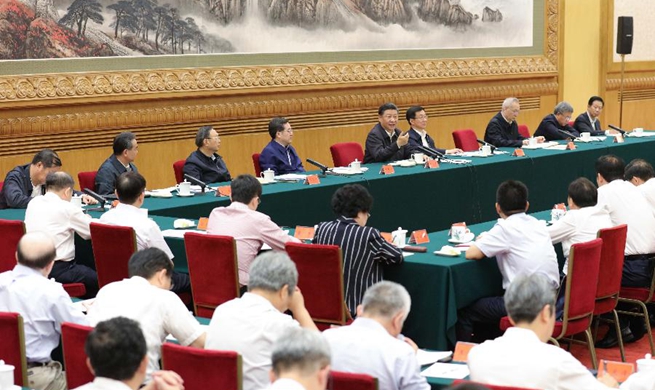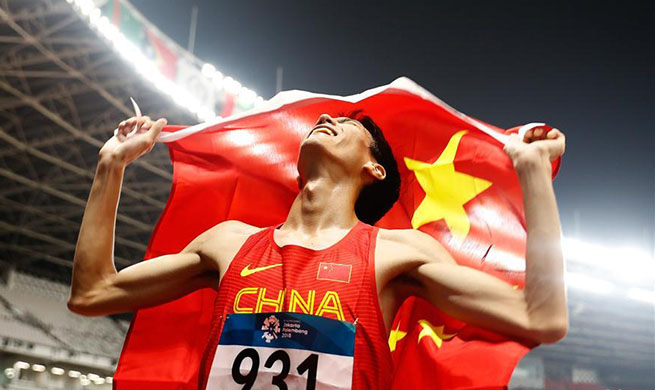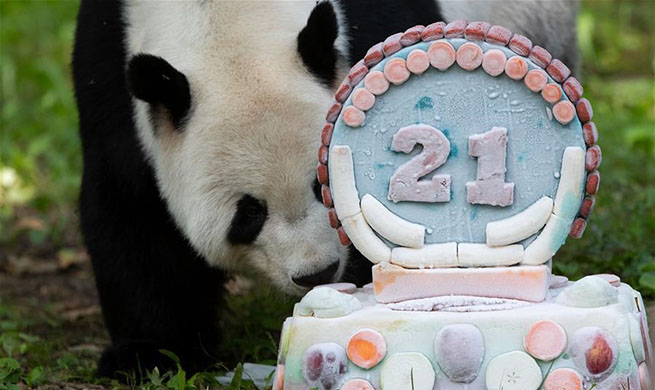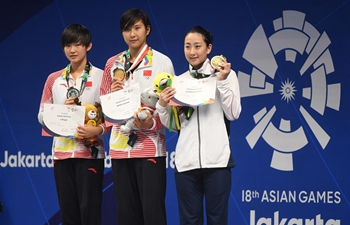SHANGHAI, Aug. 28 (Xinhua) -- Shanghai cat owner Xiao Wanqing packed her 28-inch suitcase full of imported cat food and toys at an international pet fair held in Shanghai, and ordered a courier to deliver it to her home.
The 21st Pet Fair Asia, receiving over 140,000 visitors over the weekend, closed on Sunday in Shanghai. Many like Xiao came, bringing big suitcases to buy global pet products.
Xiao tends to trust the quality of imported cat food, as "big foreign pet food suppliers are more established and have good reputations," she said.
More than 1,300 exhibitors set up booths in the 140,000 square-meter exhibition hall.
"My pet dog has a weak stomach, which food do you recommend?" asked Zhang Ran, a middle-age Shanghaier, at Royal Canin's booth.
Based on the professional consultation offered by Li Xi, the company's vet, Zhang immediately ordered 6 kg of digestive dog food for her beloved Bichon Frise.
Zhang said when she got her dog eight years ago, she only knew of two different types of dog food, one for puppies and one for adult dogs. But now, there are more and more choices on the market, and she has to learn about the different types of food designed for different dog breeds.
"China's pet food market has seen more and more products in recent years to cope with the rising demand of middle-class pet owners," said Li.
The company he works for has produced more than a dozen prescription dog foods for the China market, aiming to help dogs with illnesses like liver or intestinal problems.
As Chinese people pursue a more healthy and happy life, they are willing to treat their furry friends equally. Domestic pet food makers are catching up with the trend, said Zhao Haiming, general manager of Pure & Natural, a Chinese pet food brand.
"Our market research finds pet owners in China are more and more well-informed regarding their pet's health, and closely check the ingredients and nutritional elements before buying pet food," said Zhao. "We are developing new products to catch up with consumers' needs."
According to the Pet Industry White Paper 2018 published by goumin.com, a Chinese online pet forum, Chinese dog and cat owners are expected to spend over 5,000 yuan (about 740 U.S. dollars) per pet in 2018, an increase of 15 percent from last year. China's dog and cat market has reached over 170 billion yuan.
Xiao said in addition to cat food, raising her pet has other expenses like grooming, vaccines, and medical treatment. The total spending for her cat is about 10,000 yuan a year.
American company Litter Robot brought an auto-cleaning litter box to the fair, which reduces the frequency of cleaning a litter box to once every few weeks.
The company's salesmen said more than 200 litter boxes are sold via China's e-commerce platforms each month, each costing over 5,000 yuan.
The World Cat Show recognized by the Cat Fanciers' Association, a global organization for preserving pedigreed cats, was also held during the fair.
Qian Zheng, director of the cat zone of Pet Fair Asia, said over 200 pure-breed cats attended the show.
Qian is also a professional breeder of Persian cats.
She said nowadays, it is quite easy to contact professional breeders for consultations through social media. But 10 years ago, there were few. She bought her first Persian cat from a foreign breeder via e-mail.
"At that time, no foreign breeder was willing to sell pure-bred kittens to a Chinese buyer. They didn't believe that we could treat cats with the right attitude and skills, and the rumors about Chinese eating cats certainly didn't help."
Qian said she tried hard to convince the breeder that there was no way she would spend thousands of dollars to buy a cat and not treat it with her best intentions.
Now as one of the most well-known cat breeders in the industry, Qian's Persian cats have won first place in the Persian-bred cat's category at the CFA cat show for two consecutive years.
"Few Chinese pet owners attended the CFA cat show years ago. But now, new faces and new kittens from China appear every year," she said.
She said she owns 20 to 30 Persian cats now. These fluffy little angels cost her 600,000 to 700,000 yuan a year.
According to research by China Agriculture University, the pet industry develops rapidly when a country's GDP per capita is about 3,000 to 5,000 U.S. dollars. China's GDP per capita was about 8,800 U.S. dollars last year.
As Asia's largest trade show for animal supplies and aquariums, Pet Fair Asia started in Hong Kong and moved to Shanghai in 1999, a decision spurred by the growing demands of the market.
Since then, the scale of the fair has grown exponentially, from a 15,000 square-meter space in Shanghai Mart in 2003, to a whopping 140,000 square meters in Shanghai New International Expo Center this year.






